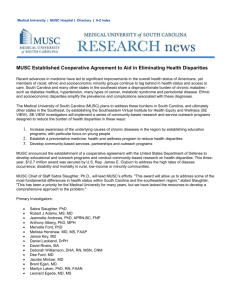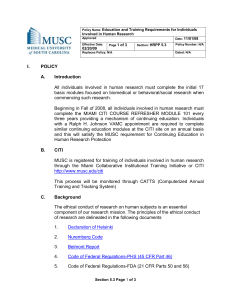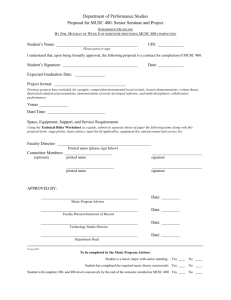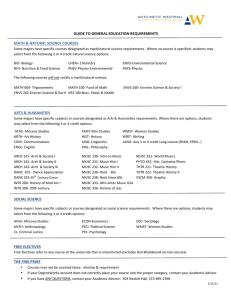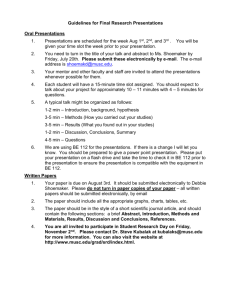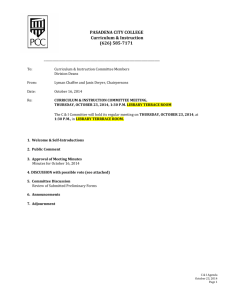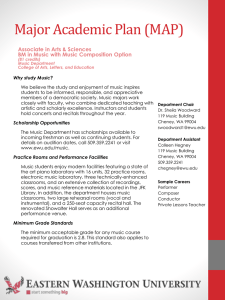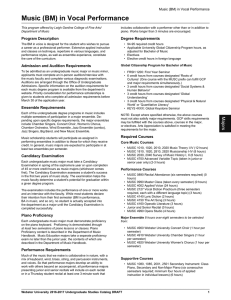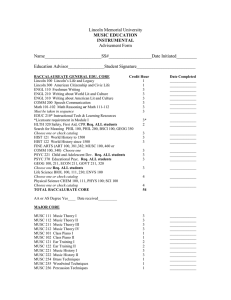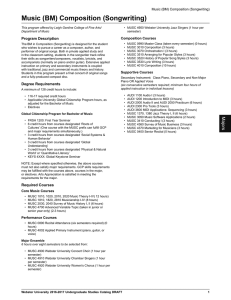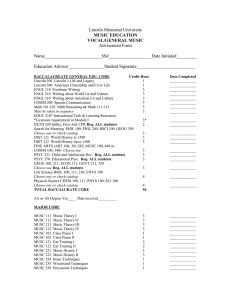Funds Flow Presentation - Medical University of South Carolina
advertisement
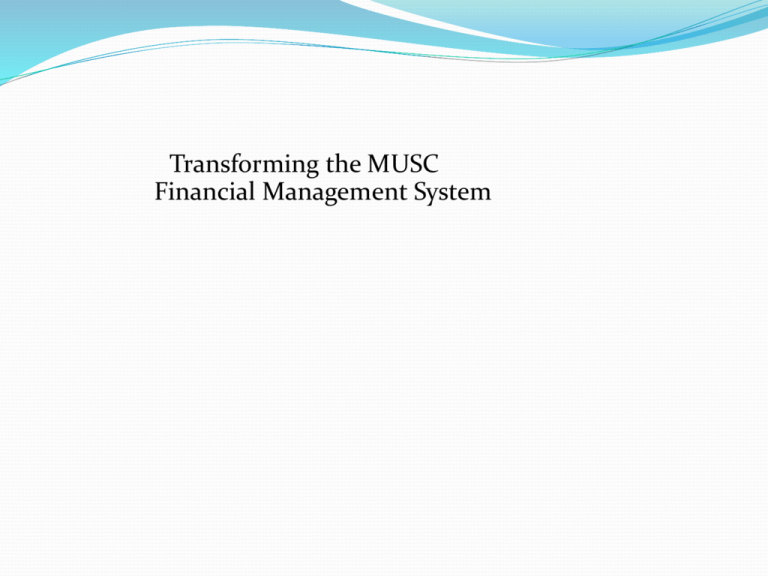
Transforming the MUSC Financial Management System Why Transform ? Necessary for MUSC to realize its Vision Promote an Incentive Based System to adjust to diminishing State resources Align revenues and costs for more informed decisionmaking Build a dialogue regarding strategic investments MUSC Vision “To be a leading and transformative Academic Health Center” President Raymond Greenberg, M.D., Ph.D Academic Leadership Retreat- Feb. 2, 2011 Vision Strategic Plan Integration Financial Management System South Carolina: Appropriations • South Carolina has cut higher-education by 45+% in recent years • South Carolina has implemented a 20% budget reduction over the last three years and is still facing a $1 billion budget shortfall1 • South Carolina is one of six states facing a budget shortfall that equals or exceeds the state’s higher education expenditures2 • If South Carolina eliminated all state government except education and Medicaid, the state would still face a budget deficit 2 • State Medicaid payments and balance sheet obligations are expected to continue driving out the “discretionary” budget priorities (like higher education) (1) Reuters, “South Carolina Scrambles to Deal with Budget Shortfall, January 5, 2011 (2) Quote from State Senator A. Shand Massey; Chronicle of Higher Education, Colleges to Confront Deep Cutbacks, January 3, 2011 5 Funds Flow Committee Principles (2010) 1. Transparency and Integrity (encompasses communication, clear definitions of categories, commonly understood rules, timeliness, accuracy and completeness) 2. Responsibility Commensurate with Authority 3. Flexible, Scalable, Translatable (works in units of different size) 4. Balance Between Central and Local Budget Authority (ensure institutional priorities can be funded) 5. Incentive Driven (enables entrepreneurism) 6. Enables Forecasting and Strategic Planning 6 Huron Consulting • Huron participated in nearly 100 meetings and worked with over 35 MUSC stakeholders to gain an understanding of the institution’s financial goals and objectives • Consensus was identified for a model that is: – Governed by the principles adopted by the Funds Flow Committee – Incentive Based 7 Incentive-based: Strengths • Focus attention on revenues and revenue development • Fosters entrepreneurship and rewards departmental efforts • Matches revenues to costs, providing understanding of the internal economy • Facilitates broader campus participation in decision-making • Aligns academic authority with budgetary responsibility • Encourages efficient and competitive administrative services • Quantifies and expresses the strategic plan, often through the rationale for central strategic fund 8 8 MUSC Specific Advantages for the New System Tuition and Fees: Distribution of all Academic Charges to Colleges will dramatically increase College’s ability to price strategically and plan for the future Academic Programs: Alignment of program revenues with costs enables cost benefit analysis, prompting critical discussions about program economic viability relative to academic priority Indirect Cost Recovery: Full allocation of indirect costs and attendant recoveries promotes informed negotiation with sponsors and informed decisions to accept/decline grants Expense Controls: Deans will have the ability to more directly impact their College’s cost structures and will have full incentives to control costs 9 Current Funds Flow Assessment 10 * Includes transfers and pass through associated with MUHA and UMA Proposed Funds Flow 11 7 Responsibility Centers 1. College of Medicine 2. College of Pharmacy 3. College of Nursing 4. College of Graduate Studies 5. College of Dental Medicine 6. College of Health Professions 7. Auxiliary Enterprises (Wellness Center, Vending, Bookstore, and Printing) 12 8 Cost Allocation Methods 1. Expenses 2. Headcount – Total 3. Research Expenditures 4. Headcount (w/o Staff) 5. Enrollment 6. Square Footage 7. Appropriations 8. Gifts 13 ~17 Months Until Full Implementation Implementation Progress Completed/Underway: Current State Assessment • Evaluation of current model incentives, challenges and funds flows Model Development • Identification of ARCs and development of revenue and cost allocation rules Communications & Consensus Building Beta Testing & Reporting Implementation • MUSC Leadership Approval of an allocation methodology (February 2, 2010) • MUSC Board of Trustees Approval (February 10, 2011) • Development of an Oversight Committee 14 ~17 Months Until Full Implementation Implementation Progress Current State Assessment Model Development Communications & Consensus Building Beta Testing & Reporting Implementation Critical Next Steps: • Develop pilot scenarios for current FY2011 operations and FY2012 & 2013 forecasts • Calculation of investment fund for strategic initiatives • Development of five-year plans for ARCs • Start implementation in 2013 • Creation of selected management reports for education and training of ARC leadership teams 15 Final Takeaways Incentive based management system has been implemented in over 40 of the top universities in the country Colleges’ strategic priorities will be more tightly linked with revenues and expenditures Implementation process will take 18 months with constant evaluation Steps will be taken to educate people in how to operate in the new system Questions ?? 17
